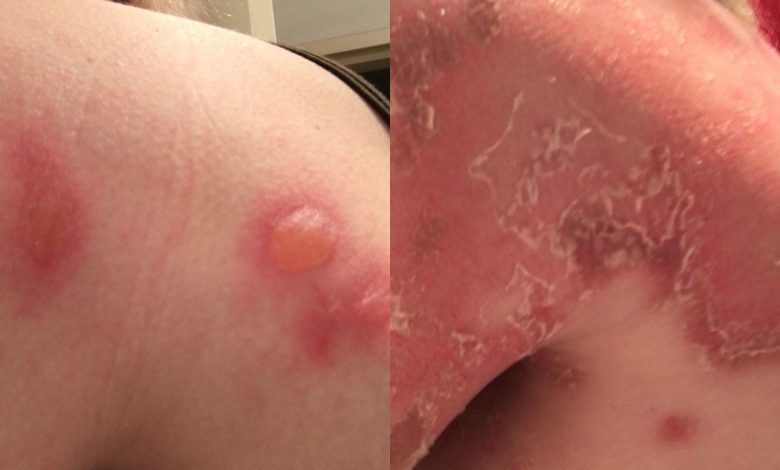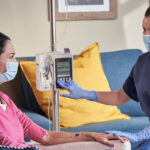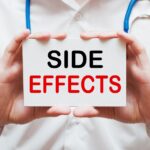How Can You Tell The Difference Between SJS and TEN?

Stevens-Johnson Syndrome (SJS) and Toxic Epidermal Necrolysis (TEN) are rare but potentially life-threatening skin conditions that can affect individuals of any age or gender. Both conditions are characterized by the breakdown of the epidermis, which is the outer layer of the skin. Although SJS and TEN share some common symptoms, they are two distinct conditions with different causes, risk factors, and treatments.
Stevens-Johnson Syndrome (SJS) and Toxic Epidermal Necrolysis (TEN) were first described in the medical literature in the 1920s and 1950s, respectively. The two conditions were initially thought to be separate entities, but later research has shown that they represent different points on a spectrum of severe drug-induced skin reactions.
SJS was first described in 1922 by Albert Stevens and Frank C. Johnson, two pediatricians who reported two cases of children with an unusual rash and symptoms of mucosal involvement. The condition was later named Stevens-Johnson Syndrome in their honor. The first reported case of TEN was in 1956 by Alan Lyell, a British dermatologist who described a patient with a severe drug reaction characterized by widespread skin detachment and mucosal involvement. The condition was initially referred to as “Lyell’s Syndrome” but later became known as Toxic Epidermal Necrolysis.
Since their initial descriptions, there have been numerous advances in the understanding and management of SJS and TEN. In the 1960s and 1970s, research began to identify certain medications and infections as triggers of SJS and TEN. In the 1980s and 1990s, there was a growing awareness of the severity of these conditions, and medical professionals began to develop guidelines for their diagnosis and treatment.
In the early 2000s, advances in genetic testing led to the discovery of specific genetic variations that increase the risk of SJS and TEN. Researchers identified a genetic marker called HLA-B*1502 that is associated with an increased risk of SJS and TEN in patients of Asian descent who are taking carbamazepine, an anticonvulsant medication. This discovery led to changes in prescribing practices and warnings on drug labels to reduce the risk of SJS and TEN in this population.
Today, SJS and TEN continue to be areas of active research, with ongoing efforts to better understand the underlying mechanisms of these conditions, develop new treatments, and improve outcomes for patients. In this article, we will discuss the differences between SJS and TEN, their symptoms, causes, risk factors, diagnosis, and treatment.
Incidence
The incidence of SJS is estimated to be around 1-6 cases per million people per year, while the incidence of TEN is even lower, at around 0.4-1.2 cases per million people per year. While these conditions are rare, they can be serious and potentially life-threatening. The mortality rate for SJS ranges from 1-5%, while the mortality rate for TEN can be as high as 30%. Mortality rates are highest in elderly patients, those with a high percentage of body surface area involved, and those with underlying medical conditions. SJS and TEN can occur at any age, but they are more common in adults than in children. Women are slightly more likely than men to develop SJS and TEN.
Symptoms
SJS and TEN share some common symptoms, such as fever, cough, and headache. However, the most prominent symptom of SJS is a rash that usually starts on the face and trunk and spreads to the limbs. The rash appears as red or purple spots, which may be painful or itchy. Within a few days, the spots can turn into blisters and cause the skin to peel off in sheets. This can expose the underlying layers of the skin, leaving the person vulnerable to infections and other complications. In severe cases, the eyes, mouth, and genitals may also be affected, causing pain, inflammation, and scarring.
In contrast, TEN is characterized by widespread skin detachment, which can affect up to 90% of the body surface area. The skin usually starts to blister and peel off within a few days, leaving large areas of exposed tissue. The affected skin may also be painful, red, and swollen, and may appear as if it has been burned. In severe cases, the skin may detach from the underlying tissues, leading to complications such as sepsis, pneumonia, and organ failure. The eyes, mouth, and genitals may also be affected, causing pain, inflammation, and scarring.
Causes
SJS and TEN are both caused by a severe reaction to medication or an infection. In some cases, the cause may be unknown. The most common medications that can trigger SJS and TEN are antibiotics, anticonvulsants, and nonsteroidal anti-inflammatory drugs (NSAIDs). Some infections that can trigger SJS and TEN are herpes simplex, Epstein-Barr virus, and Mycoplasma pneumonia.
SJS and TEN are thought to be caused by a hypersensitivity reaction, in which the immune system mistakenly attacks the skin and mucous membranes. This can lead to the breakdown of the epidermis and the development of blisters and sores. The severity of the reaction can vary depending on the individual’s immune system and the specific medication or infection that triggers it.
Risk Factors
Several risk factors can increase a person’s likelihood of developing SJS or TEN. These include:
• Age: SJS and TEN are more common in children and young adults.
• Genetics: Certain genetic variations may increase the risk of developing SJS or TEN.
• Medications: Certain medications are more likely to trigger SJS and TEN than others. These include sulfonamides, penicillins, and carbamazepine.
• Infections: Certain infections are more likely to trigger SJS and TEN than others. These include herpes simplex, Epstein-Barr virus, and Mycoplasma pneumonia.
• Medical conditions: Certain medical conditions, such as HIV and lupus, may increase the risk of developing SJS or TEN.
Diagnosis
SJS and TEN are diagnosed based on clinical symptoms and laboratory tests. The doctor will usually perform a physical examination to assess the extent and severity of the skin lesions. They may also order blood tests to check for signs of infection or inflammation. A skin biopsy may also be performed, in which a small sample of skin is removed for analysis under a microscope.
Treatment
SJS and TEN are medical emergencies that require immediate treatment. The main goals of treatment are to stop the cause of the condition, manage symptoms, and prevent complications. The first step in treating SJS and TEN is to identify and stop the medication or infection that triggered the condition. In some cases, hospitalization may be necessary to monitor the patient’s condition and provide supportive care.
Supportive care may include the administration of intravenous fluids and electrolytes to prevent dehydration, and pain medication to manage discomfort. Patients may also receive topical treatments such as creams or ointments to reduce inflammation and promote healing. In severe cases, patients may require treatment in an intensive care unit, where they can receive specialized care for complications such as respiratory distress, sepsis, and organ failure.
In some cases, patients with SJS or TEN may require surgery to remove dead or damaged tissue and promote healing. This is usually done in cases where the condition has affected the eyes, mouth, or genitals. Patients may also require ongoing medical care to manage long-term complications, such as scarring, vision problems, and respiratory issues.
Prevention
The best way to prevent SJS and TEN is to avoid medications and infections that can trigger these conditions. Patients should always inform their healthcare providers about any medications they are taking, including over-the-counter drugs and herbal supplements. They should also be vigilant about any changes in their skin or mucous membranes, and seek medical attention promptly if they experience any symptoms.
Conclusion
SJS and TEN are rare but potentially life-threatening skin conditions that can be caused by a severe reaction to medication or an infection. Although these conditions share some common symptoms, they are two distinct conditions with different causes, risk factors, and treatments. SJS is characterized by a rash that usually starts on the face and trunk and spreads to the limbs, while TEN is characterized by widespread skin detachment that can affect up to 90% of the body surface area.
Diagnosis of SJS and TEN is based on clinical symptoms and laboratory tests, and treatment involves identifying and stopping the medication or infection that triggered the condition, managing symptoms, and preventing complications. Prevention of SJS and TEN involves avoiding medications and infections that can trigger these conditions and being vigilant about any changes in the skin or mucous membranes. With prompt diagnosis and appropriate treatment, the prognosis for SJS and TEN can be good, but early recognition and treatment are essential for a positive outcome.





